WHEN JORDI VAQUER and I finally locate the herd, it’s nearly noon and the big ibex males are bedded high in the rocks, soaking up the sun and recovering from what had sounded like a boisterous morning of rut-season sparring. Hours earlier, long before the sun had warmed this limestone canyon in Spain’s remote Aragon region, Jordi and I had stood on the rim, the December moon luminescing an overnight snow, listening to what sounded like a succession of rifle shots in the cliffs below. “Los machos,” said Jordi, his native Spanish momentarily trumping his excellent English. “The males are fighting.”
Below us, the wild goats were crashing their immense horns in a violent demonstration of dominance. All day, the ibex have remained hidden from us by the verticality of the limestone canyon, and it takes hours of hiking to find them. By the time we spot the herd above us in the rocks, any chance of approaching them unseen is gone.
A few nannies and their short-faced kids graze lower on the south-facing slope, but their movement is slowly, methodically uphill, toward the crenellation of van-size boulders where the rest of the herd, including at least four trophy billies, alternately dozes and scans for danger above in this valley stitched with old stone walls, fuzzed with fields of wild thyme, and studded with the ruins of ancient huts.
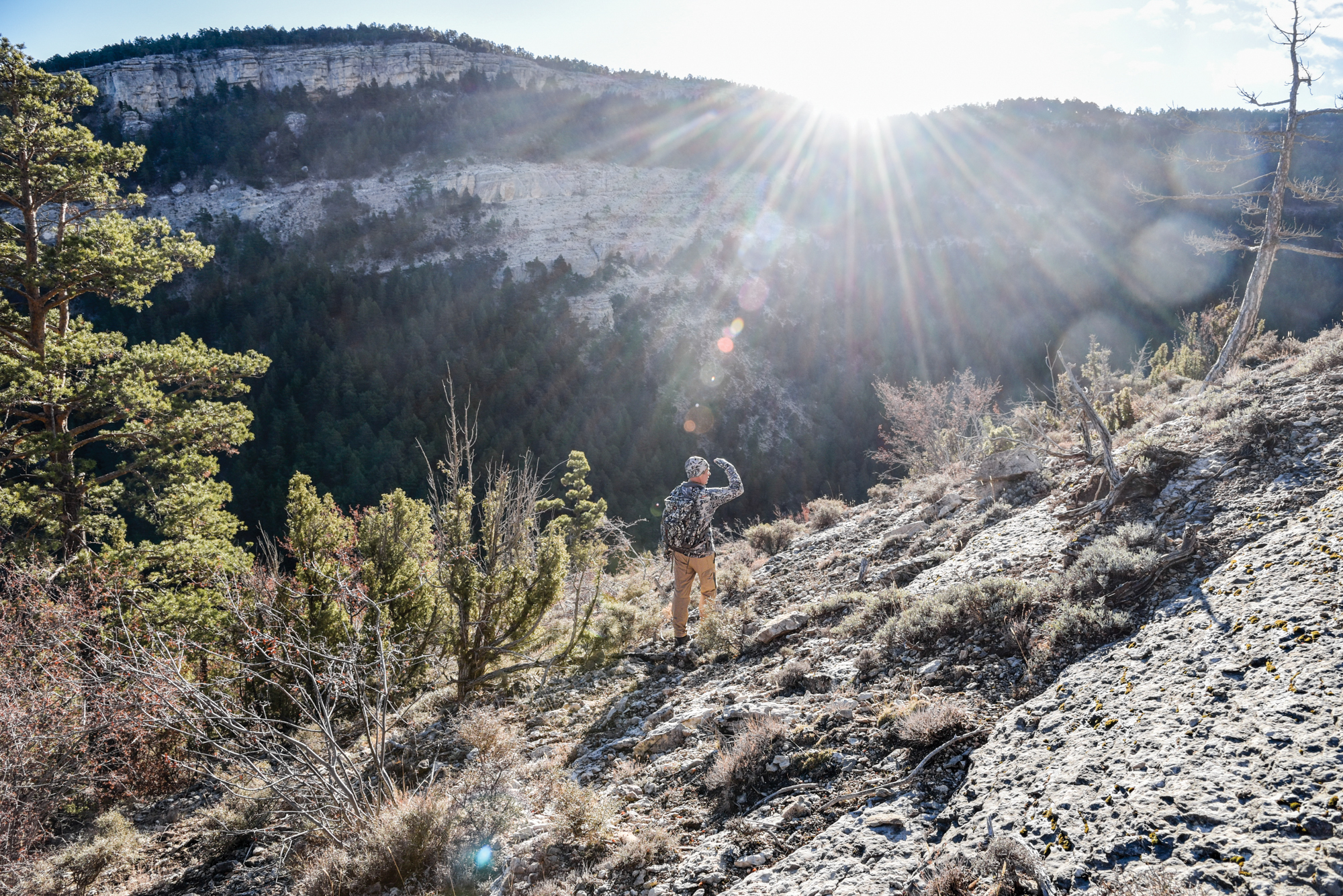
Jordi and I, huddled on a limestone ledge a good half-mile away, review our options, which will be familiar to any mountain hunter.
We could back out from our perch, keeping our profiles low, and sneak into the stand of wind-blasted pine trees that cloaks the north-facing side of this mountain. The timber promises to hide our approach to the very top of the ridge, just above the herd. If the wind is right and we correctly guess where to emerge from cover, there is a chance the biggest billy might be in range of my crossbow.
There’s an equal chance the wind could shift and blow our scent right to the herd, or that the expanse of open, fissured limestone between the edge of the trees and the bedded ibex is too far for a crossbow shot. There’s also the chance that the animals will have moved by the time we work our way through the timber.
Alternatively, we could emulate the goats and stay put on our stony ledge, resting in the bright sun until later in the day. If we read the tracks in the snow correctly as we approached this ledge, then we are set up along a travel corridor, a pasture of wild lavender and pennyroyal behind us. When the ibex rouse and graze away from their beds in the afternoon, there’s a chance they might move past us to feed in the alpine herb garden.
Not far from here is a complex of caves adorned with Bronze Age paintings depicting ibex being shot with arrows.
Jordi and I whisper the pros and cons of this universal hunter’s dilemma—to push and make our luck or to wait and have our luck decided by the animals—with our heads together so our conversation doesn’t disturb the ibex. There’s slim chance of that; the mole-colored goats are so far away that we’d have to shout to alarm them. But there’s another reason for our conspiratorial huddle. I speak lousy Spanish. Jordi speaks very good English, but occasionally we get stumped on a term critical to our mission.
“Keep your prismatico on los machos. I’ll watch el barranco,” Jordi says. He reads my incomprehension. “Prismatico…” he points to the binoculars on my chest.
“El barranco?”
“You call it ‘the canyon,’ I believe.”
He sweeps his hand across the vista below us, across terraces of neglected pastures and ancient stone dwellings. During our morning hike, I counted more than a dozen caved-in huts, evidence that at one time—centuries ago, by all appearances—many sheep-herding families lived in this place. In the past few days, we’d hunted nearby barrancos, all uninhabited but with plenty of archaeological evidence of intensive human settlement.
These days, Aragon’s canyons are home to a few ribby cows, a horse or two, and increasing numbers of soaring-horned Beceite ibex.
Layers of History
The story of this place is older than even the ruins below us. Down in the medieval castle town where we’re staying—in a former orphanage—a church dates to 1048. This region of northeastern Spain, called “El Maestrazgo” (in English: “The Master”) after a number of Crusades-era military and religious leaders, is the least inhabited district of the country. It has been serially occupied and abandoned for 1,200 years by Christians, Moors, Knights Templar, and both nationalists and republicans during the Spanish Civil War. Not far from here is a complex of caves adorned with Bronze Age paintings depicting ibex being shot with arrows.
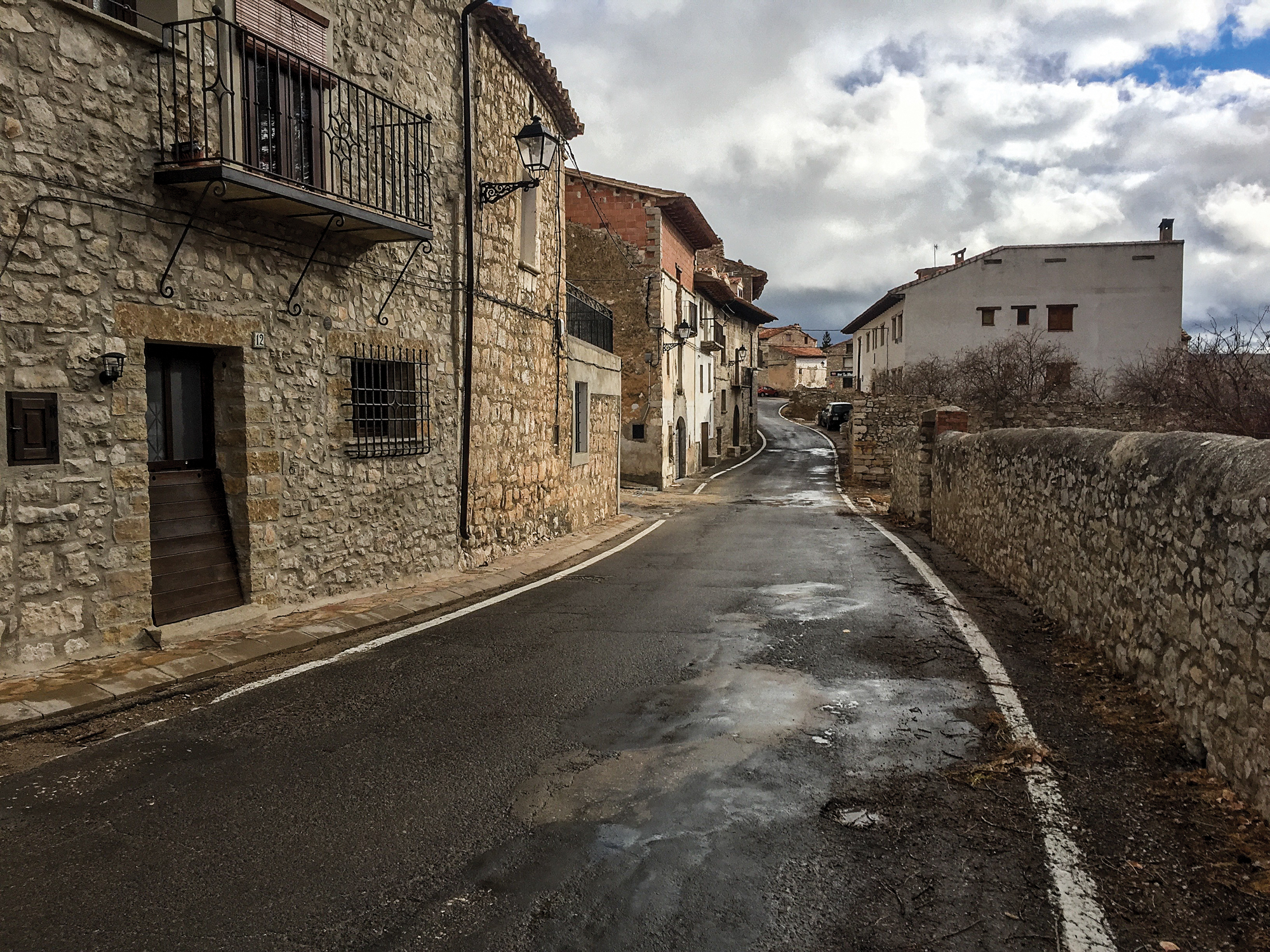
I have come to this remote spot in Western Europe with three other Americans to hunt the descendants of those prehistoric ibex. Like the ancient hunters who painted those cave walls with charcoal and goat’s blood, we’re launching arrows. Our bows are high-tech Ravin crossbows, and we aim to test the capabilities of this radical bow design far beyond the Wisconsin whitetail woods of its origin.
In a fresco at a 10th-century castle on the drive here, we see knights depicted with crossbows. It occurs to me that we might be the first people in this region to use these implements in a thousand years—not to defend castles from marauding Moors, but to hunt ibex.
I shot my Ravin all fall at targets, stretching my range to 100 yards off shooting sticks. I have no intention of shooting an animal at that range, but I don’t know what to expect in Spain. I understand ibex are creatures of vertical country and that we’ll be on foot, so I practiced shooting at extreme angles.
Arranging an international hunt can be fraught, with uncertainty defining everything from destination, hunting styles and traditions, and even the ability to bring certain types of guns or bows to some jurisdictions. Most traveling hunters make arrangements with a hunt broker, initiating contact at trade shows or online. The brokers often then contract with outfitters in-country to actually guide the hunt.
Our group cut out the middleman. Mutual friends had connected our party’s leader, Ryan Chuckel, who runs Ravin’s media relations, with Jordi Vaquer, who works as a chemical engineer in Barcelona. Jordi and his father, Manolo, are evangelists for the nascent sport of bowhunting in Spain. They teach classes, host shoots, and enthusiastically promote archery to Spanish hunters who are more accustomed to hunting driven boar with rifles.
Jordi put us in touch with outfitter Alejo Sopena, who had four tags for trophy-class Beceite ibex in the Maestrazgo area. Sopena doesn’t have a booth at sporting shows or advertise online, but he’s one of Spain’s go-to outfitters for trophy ibex, not just the Beceite subspecies but also Spain’s other three (Gredos, Ronda, and Southeastern), in addition to chamois in the Pyrenees Mountains.
Because Sopena’s guides were unfamiliar with bows—not to mention crossbows—Jordi took time off from his job to join us. He acted not only as interpreter but also as an intermediary who could explain the limitations of bowhunting to guides more accustomed to shooting ibex from several hundred yards.
Though he didn’t have a tag himself, Jordi was eager to hunt with us. For most workaday Spaniards, ibex are out of reach geographically and financially. They live in fairly defined places, and because tags are valued at several thousand euros, access to most ibex habitat is closely controlled.
Also, Jordi explained to me as we sat on our limestone ledge, watching the bedded goats, there’s a class distinction when it comes to ibex and chamois, the two species of Spanish big game that attract the most international attention.
“Most of Spain’s hunting population belongs to rural areas where hunting used to be a way of providing meat,” he says. “Of course, the situation has changed. Nobody hunts just for meat anymore, but the feeling still remains, and most hunting is based on wild boar, which is as common here as the whitetail deer is in the U.S. Hunting is nearly free, and it is organized in hunting groups that drive the woods with dogs. Every rural village has a hunting group, and they hold drives most weekends throughout the year. These groups measure their success by the number of animals they kill, not by the size. Trophies are not a consideration.
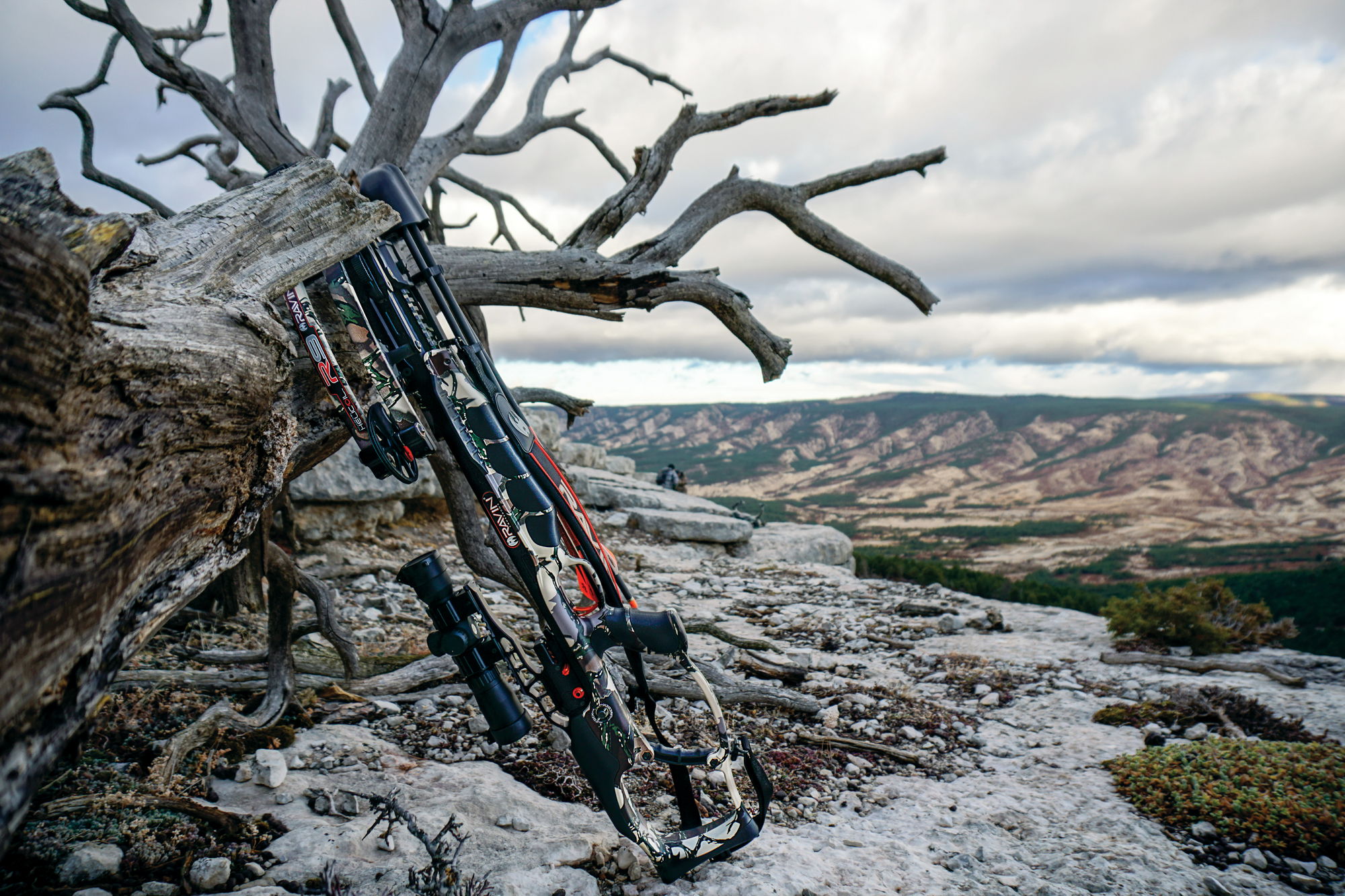
“Then a foreign hunter shows up after paying thousands of euros to someone to be guided to a trophy ibex in a protected area. Well, the local people think that he is not like them. And the locals think this person cannot be a hunter, because he can’t hunt the wild boar in the woods, like we do.
“But here’s the thing: If even one of those local hunters had the chance to hunt an ibex, they would drop everything to come, and they would love it.”
Jordi, on his first-ever ibex hunt, is learning the animal’s habits and habitats in step with me, also on my first ibex hunt. I compare hunting here, in the band of cliffs above alpine pastures, to hunting bighorn in the Rockies. Like sheep, ibex are herding animals. They rely on their eyesight for protection but seek sanctuary on exposed promontories, where they can see and react to danger from a distance, using their cloven hooves and powerful shoulders to scamper up sheer stone faces.
“If even one of those local hunters had the chance to hunt an ibex, they would drop everything to come, and they would love it.”
Jordi Vaquer
Like mountain sheep, ibex seek safety in numbers. The big machos are protected by a phalanx of younger males and ewes and kids, which spread out lower on the slope. I’d be happy killing any of the four mature billies in the herd we’re watching. Two of them have horns that curl out into a distinctive Y. Jordi calls this winglike spreading-horn style “avion,” or airplane. But two of the males have horns that curl in and back, making a shape like a heart. “Lira,” Jordi calls this horn conformation, reminiscent of a lyre (the instrument).
One of these lira males is especially grand. He’s bedded just under the horizon, so we can only see the tips of his horns. Through my prismatico, I can count ridges, like the segments of a nautilus shell, on the edge of his horns. These are age rings. I can’t count them all, but I stop at 10. If I have a shot and a choice, then this is the ibex I want.
Jordi sees which billy I’m watching. “El macho montes,” he calls the old ibex. The male of the mountains.
The Making of a Bowhunter
Though it’s lunchtime and we’ve brought no food, I’m uncharacteristically not hungry. Jordi and I are by ourselves, a rare DIY hunt for European game. Sopena has allowed us to hunt together, partly because he trusts our abilities, but also because he has recognized that Jordi knows far more about bowhunting than his guides do. On the first day, one of the guides had spotted a mature billy on a distant cliff face and rushed straight toward the animal, spreading shooting sticks when he got about 150 yards away, expecting the crossbow hunter to make a shot at that distance, and at a running animal, no less.
“I see the appeal of la ballesta,” says Lionel Mantorell Torres, using the word for crossbow. Torres is the landowner whose remote canyon Jordi and I are hunting, and we meet him every evening in town for a dinner of jamon or paella, always with Spanish wine, olives, and cheese. “With a bow, the hunt lasts longer and is very romantic.” Then he looks skeptically at my Ravin. “But I can also see why your Indians lost.”
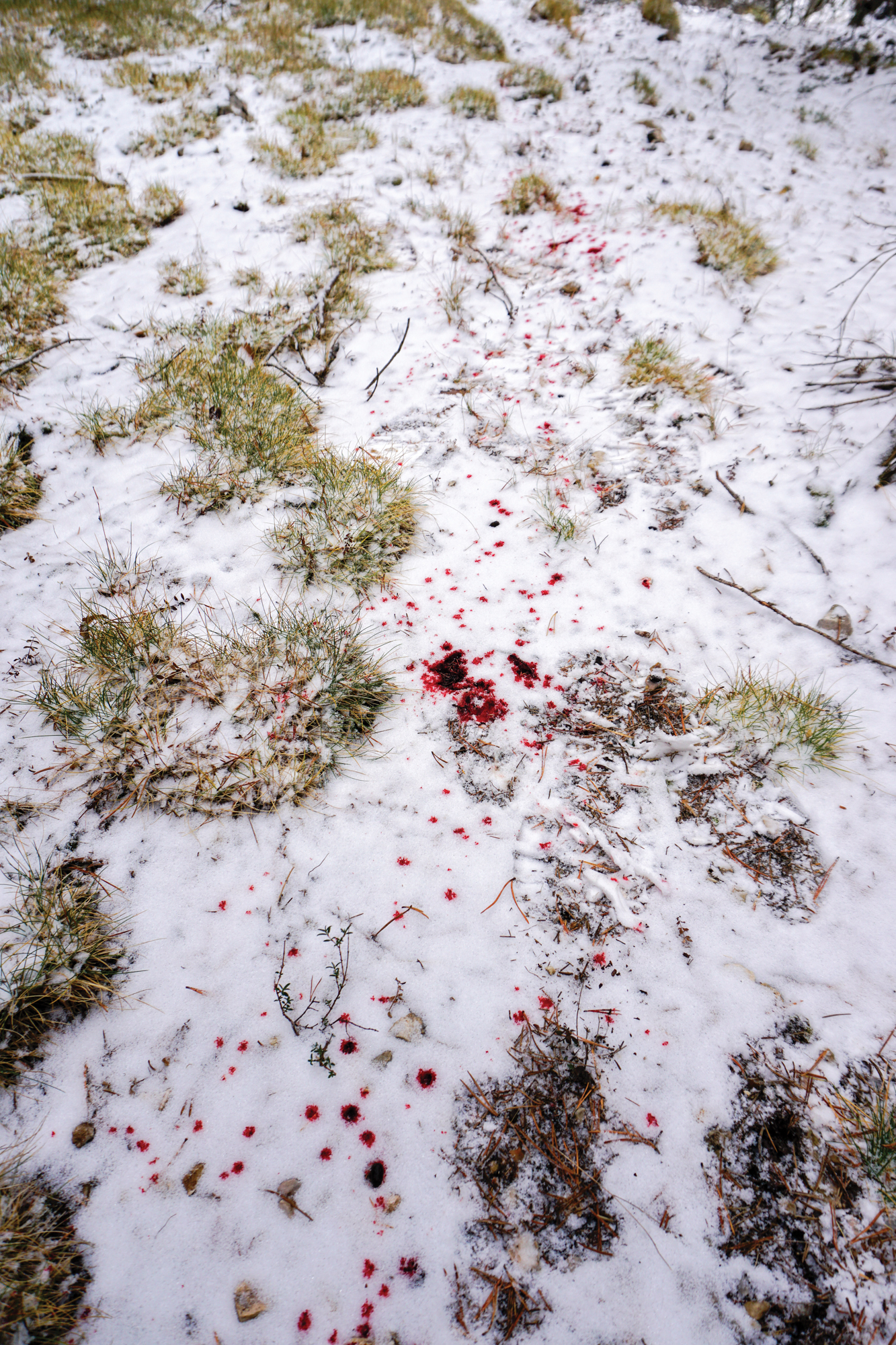
Spain may be full of hunters, but bowhunters remain a vanishingly small percentage of the population. If it hadn’t been for a serendipitous trip to the U.S., Jordi might not have been among them.
He was visiting Minnesota on business, and a co-worker invited Jordi to shoot arrows at targets.
“It was an incredible feeling, because I was in a moment when I needed a challenge in my hunting life,” says Jordi. “Shooting wild boars at home with a rifle was fun, but it wasn’t a challenge anymore. I came back home with a brand-new bow. I showed it to my father, and a few days later I had to buy another one because he took mine. Everything changed for us, from having to get close to reading the wind to our clothing to learning to draw the bow to waiting for the boar to turn broadside.
“It was like starting hunting again. My father and I felt the same feelings of being a child. This is why we got hooked by archery—tiro el arco, we call it. We kill less, but we hunt more.”
Jordi’s enthusiasm was infectious, and soon he was one of Spain’s leading ambassadors for archery. Across a country with no archery pro shops, Jordi and Manolo taught classes, lent equipment, and preached ethical shots and the gospel of restraint.
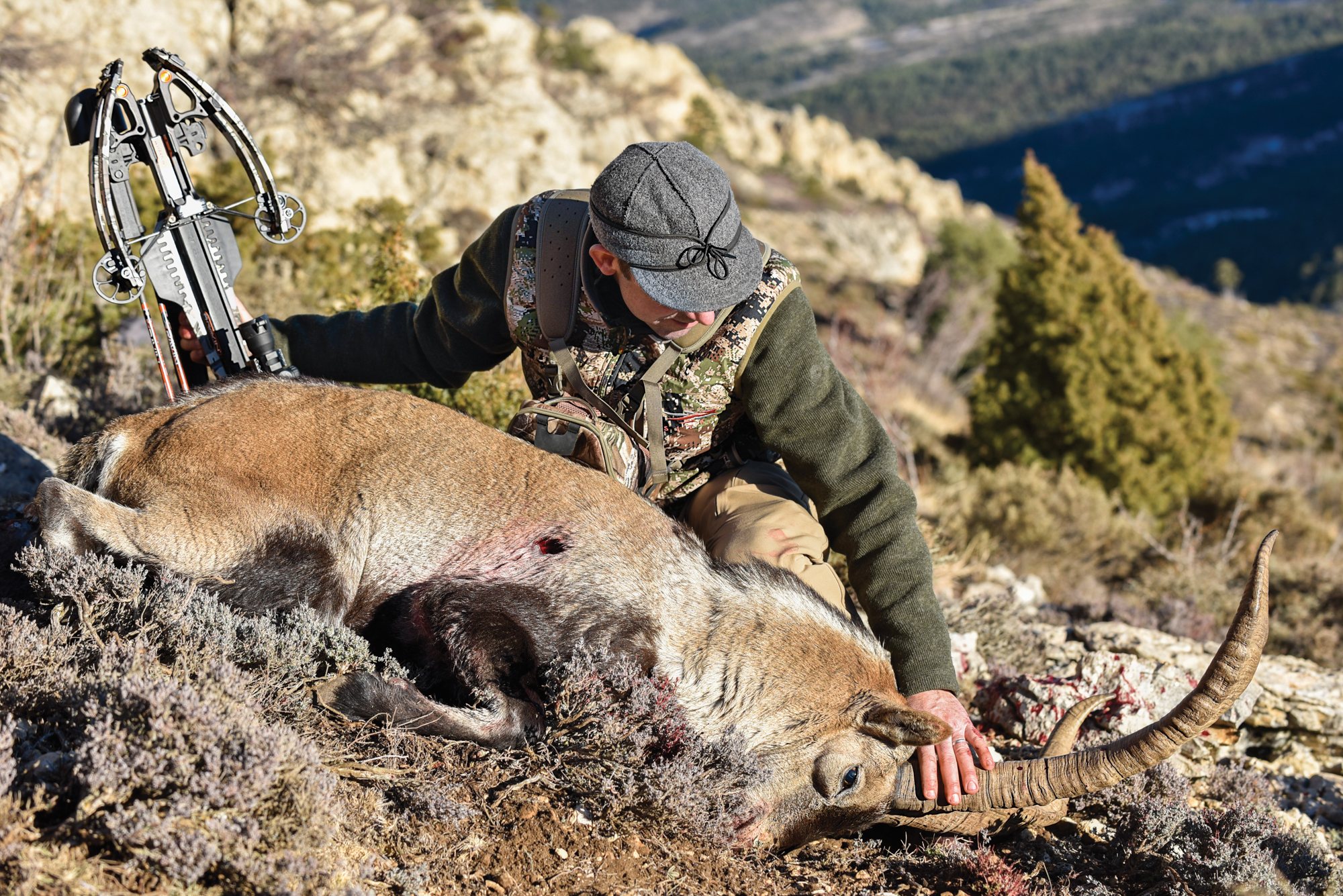
Our Ravin crossbows represented yet another challenge to Jordi. He had shot crossbows—Spain is one of the few European countries that allow bowhunting—but had never seen them in the field.
“I don’t know that crossbows will experience a big growth in Spain’s hunting market,” he concluded. “The situation is different in America because a crossbow allows a rifle hunter to hunt during archery season, but we don’t have a particular archery season in Spain, so a decision to take a crossbow or a bow hunting is driven by how a hunter feels about challenging themselves.”
After three days of hunting ibex with a crossbow, the idea seemed challenging, indeed.
Ibex Renaissance
It wasn’t very many years ago that ibex were protected across Spain. The iconic goat of the Iberian Peninsula was limited to a few refuges. Ibex had been dwindling for centuries, their populations reduced by subsistence hunting and their habitat diminished by sheep herders and cattle grazers. The Spanish Civil War, which raged across the Maestrazgo in the 1930s, nearly finished off the country’s wild ibex.
Some of the herds never recovered. The Pyrenean subspecies went extinct in 2000, but a refuge established near Madrid allowed the Gredos subspecies to flourish. The Beceite Hunting Preserve near Tarragona was established in the 1960s to protect the remaining 400 individuals of the Beceite subspecies.
Over the past decades, ibex have wandered away from the preserve to establish herds in the surrounding mountains. The area of the Maestrazgo we hunted is only about 50 miles south of the refuge, in the province of Teruel, which now contains more than 12,000 of the Beceite subspecies.
Torres, the landowner, whose family lived and grazed in this limestone canyon for generations, said when he was a child, ibex were like mythical creatures, often described but never seen.
“The last of the ibex in this area were killed during la Guerra civil,” Torres told me. “You look up in the cliffs and you’ll find caves where the guerrillas hid. Then, about 30 years ago, we started seeing ibex come back. They’ve been slowly increasing since.”
Torres allows only four ibex to be shot every year off his lands and those of his neighbors. These are the four tags my friends and I hold.
The Endgame
I’ve been so busy taking notes, I don’t notice that los machos are on their feet and milling in the rocks. Jordi hisses at me that I should cock my bow and nock an arrow. A few nannies are moving our way.
We press ourselves to the stone and watch as the herd approaches, a ragged line headed to feed. I push my bow in front of me, realizing the ibex will be too close for me to set up sticks for a measured shot. Earlier I ranged landmarks—trees, boulders, and a ruined stone wall—but the herd has moved inside those marks and into a little trough in the limestone ledge. Their bodies drop out of sight; all I can see are the tips of horns, gathered too tightly for a clean shot.
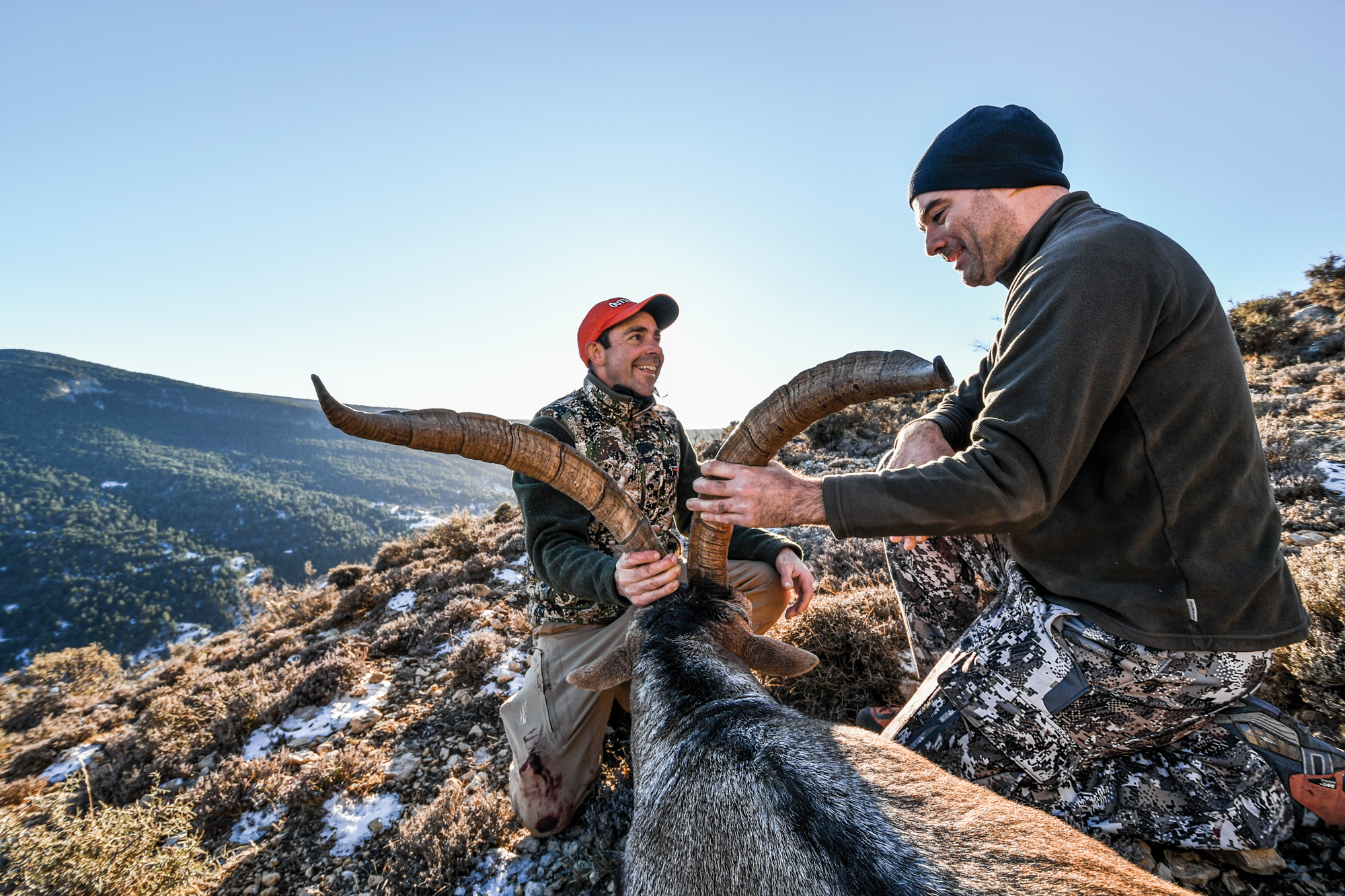
Then Jordi whistles to stop the herd, and I rise out of the rocks, crossbow already on my shoulder. A big-horned macho is in the clear, about 20 yards away. Instinctively, I center the crosshair and send an arrow. I see orange fletching zip through the air before it contacts the billy with a hollow thump. The herd scatters like the red-legged partridge we’ve seen in the canyon, pours over the rim, and vanishes out of sight.
I get up, my legs shaking both from adrenaline and from our hours of cramped waiting, and wobble over to where the ibex was standing when I shot. I find hair, but no arrow. Jordi, looking over the rim and into the canyon, whistles again. He’s found blood.
I join him, and a few drops turn to a splatter and then a spurt. Crimson is splashed across the gray limestone. We follow the trail over the rim. I cannot believe an animal losing this much blood—mucho sangre, Jordi says—can keep its feet, but we find where the ibex vaulted from the fissure to scarp down the cliff.
We lower ourselves down the 50-foot wall, and when Jordi and I get to the base of the cliff, we pick up the blood trail. Now we find bits of lung tissue, and as we round a boulder field, we see el macho, crashed into a sulago bush, dead when he hit the ground, his life released by a two-bladed broadhead gash just behind his massive shoulders.
I approach the ibex slowly, tentatively, as though he were royalty, and lift his heavy head. His Old World horns are even thicker than I had imagined. I count rings, stopping when I reach 10.
Read more OL+ stories.
